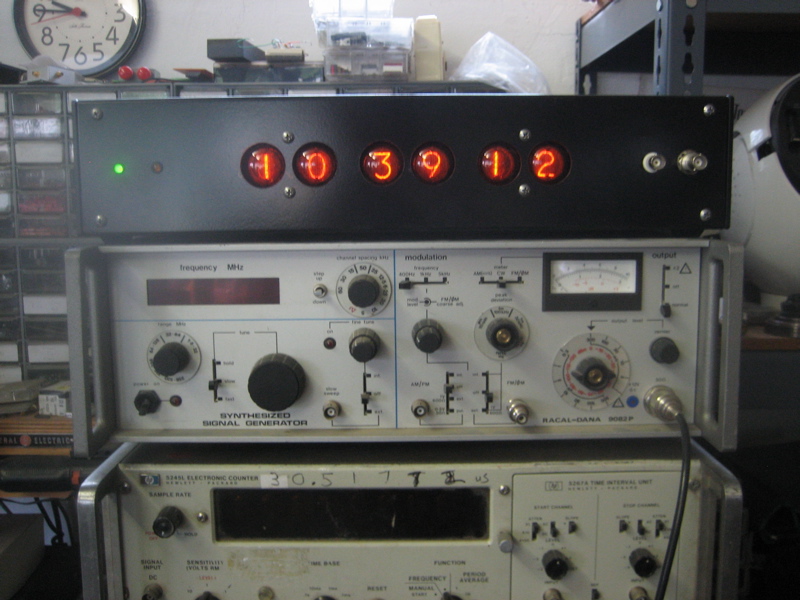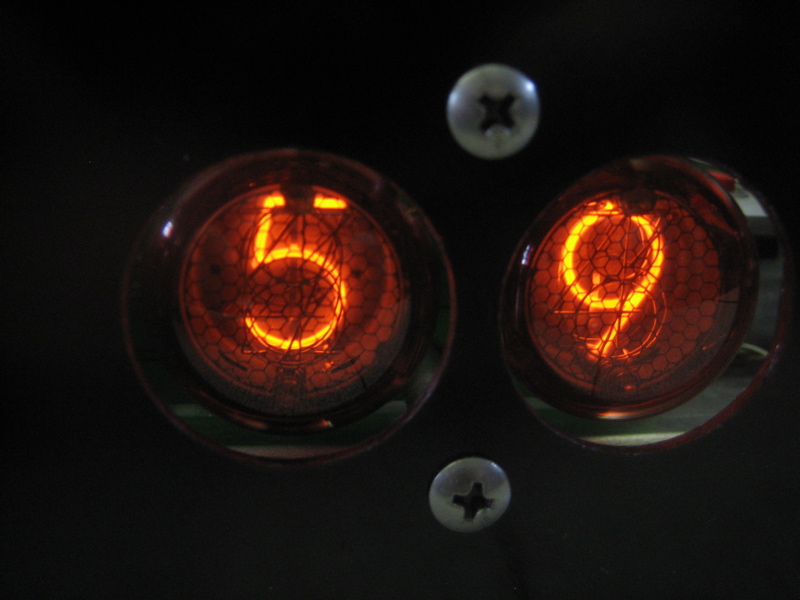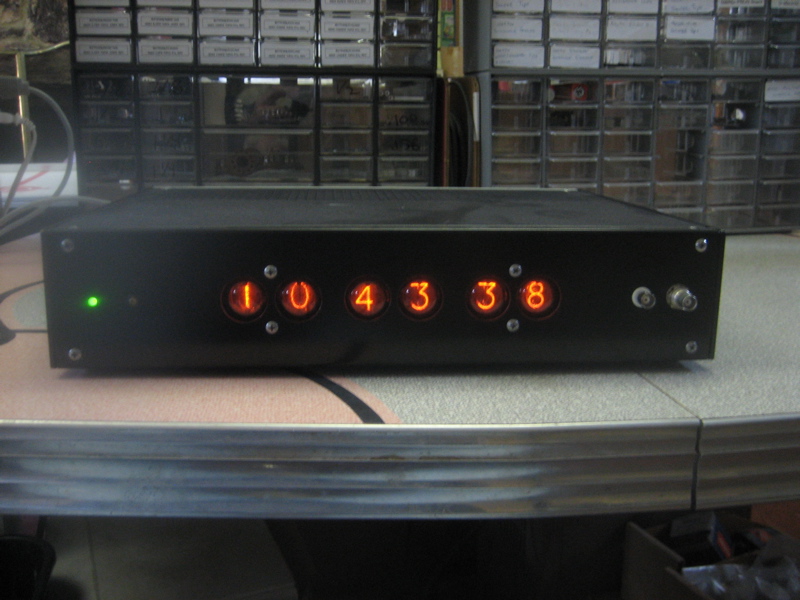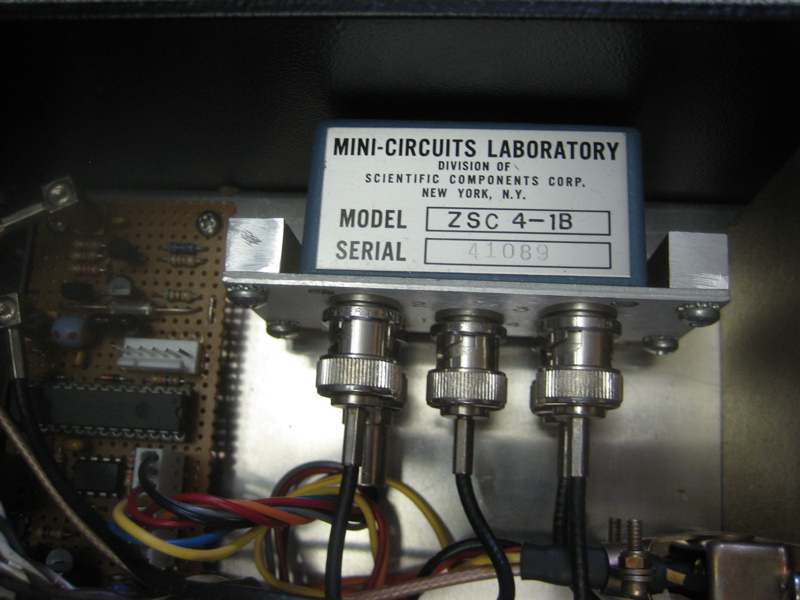
Sometimes, a regular old clock isn't quite good enough. You need something
a little more accurate. In that case, the rubidium oscillator is a fine
choice. It's good to about a millisecond per year.

Nixie tubes make a fine clock display.

The connectors on the front panel provide a 10 MHz clock and a 1PPS pulse.

The clock has two 12V 7AH lead-acid batteries for backup power. The batteries
are float-charged from the AC line. It can run for about 6 hours on the backup
supply. The orange LED on the front panel indicates that the batteries are
running low on charge. The nixies are powered from the AC line, so it can't
display the time when on batteries.

The time-setting buttons are inside to prevent tampering by cute children
of all ages.

The frequency source is an Efratom FRS-N rubidium oscillator.
This one is a ten-year old NOS unit found on ebay.

The 10 MHz clock signal is amplified and sent to a splitter to make four copies.
One goes to the front panel and two go to the rear panel. The fourth is unused.

The 10 MHz signal is divided by 10 million to make 1PPS to run the display.
Tom Van Baak provided the PIC microcontroller code to do this. I modified it
slightly to make multiple copies of 1PPS for the front and rear panel outputs.
